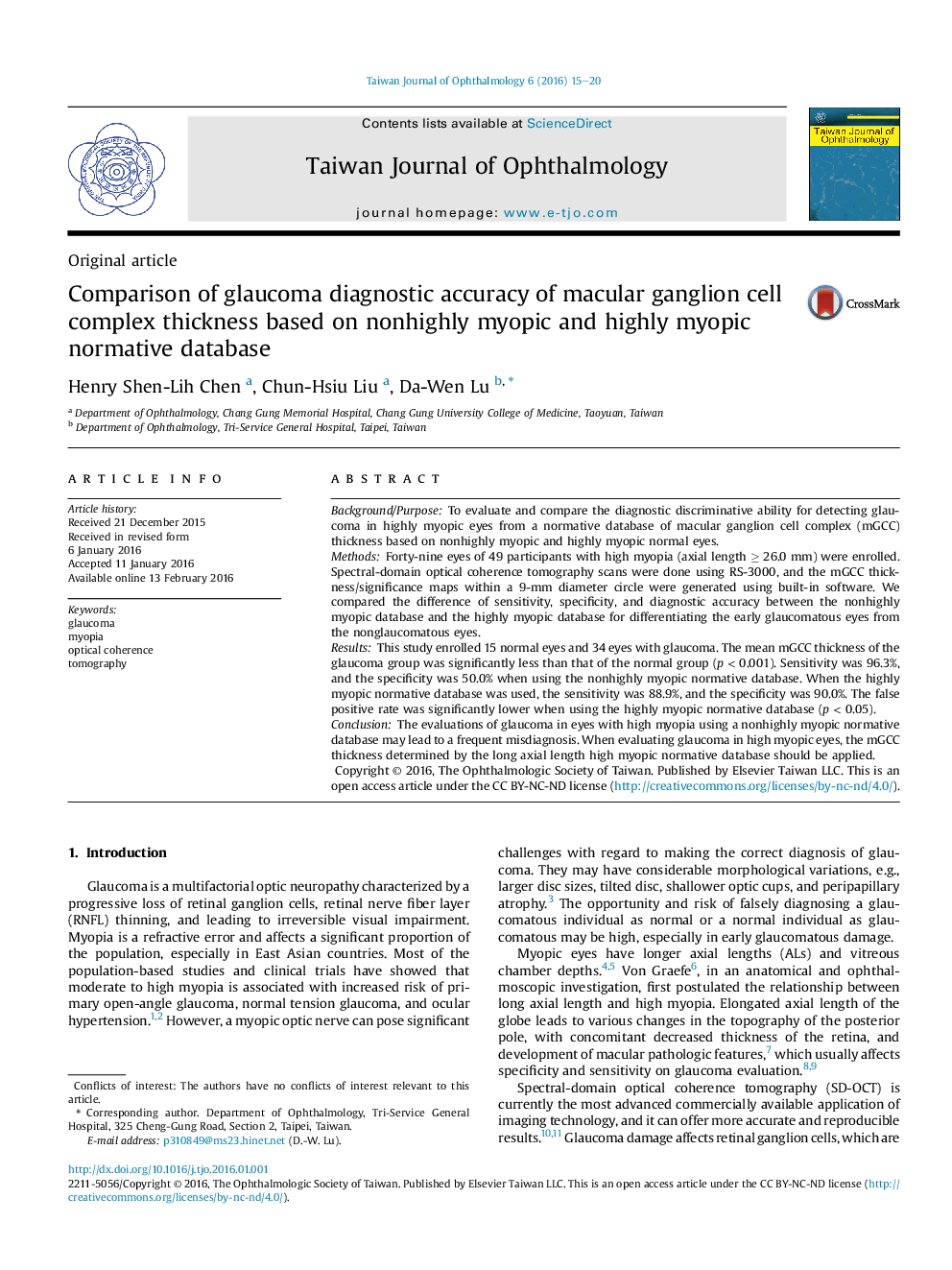| Article ID | Journal | Published Year | Pages | File Type |
|---|---|---|---|---|
| 4033321 | Taiwan Journal of Ophthalmology | 2016 | 6 Pages |
Background/PurposeTo evaluate and compare the diagnostic discriminative ability for detecting glaucoma in highly myopic eyes from a normative database of macular ganglion cell complex (mGCC) thickness based on nonhighly myopic and highly myopic normal eyes.MethodsForty-nine eyes of 49 participants with high myopia (axial length ≥ 26.0 mm) were enrolled. Spectral-domain optical coherence tomography scans were done using RS-3000, and the mGCC thickness/significance maps within a 9-mm diameter circle were generated using built-in software. We compared the difference of sensitivity, specificity, and diagnostic accuracy between the nonhighly myopic database and the highly myopic database for differentiating the early glaucomatous eyes from the nonglaucomatous eyes.ResultsThis study enrolled 15 normal eyes and 34 eyes with glaucoma. The mean mGCC thickness of the glaucoma group was significantly less than that of the normal group (p < 0.001). Sensitivity was 96.3%, and the specificity was 50.0% when using the nonhighly myopic normative database. When the highly myopic normative database was used, the sensitivity was 88.9%, and the specificity was 90.0%. The false positive rate was significantly lower when using the highly myopic normative database (p < 0.05).ConclusionThe evaluations of glaucoma in eyes with high myopia using a nonhighly myopic normative database may lead to a frequent misdiagnosis. When evaluating glaucoma in high myopic eyes, the mGCC thickness determined by the long axial length high myopic normative database should be applied.
